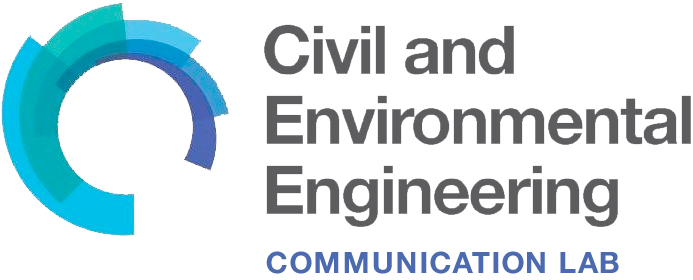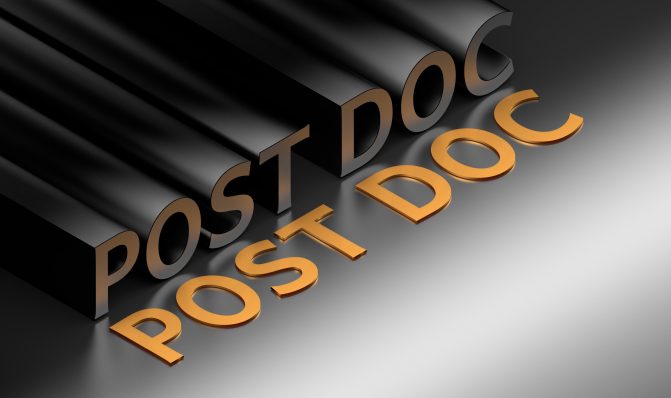

Postdoctoral Fellowship Research Statements: What I Wish I Knew Before Writing
Written by Andrew Feldman

Of course, the odds of receiving postdoctoral fellowships are not high (typically single digit percentages). Knowing these odds, I applied for eight fellowships: four through university departments and four through government agencies. I initially felt like I had no idea how to be successful, especially since I received none of the 12 doctoral fellowships I had previously applied for. I also had a rough start: my first postdoctoral fellowship application was rejected a month after submission for being slightly out of scope. It certainly required mental fortitude to continue through this application process.
After speaking with colleagues in my field, common themes emerged in how they approach proposals, especially in how to write a stand-out research statement. At this point starting the fifth year of my PhD, I understood the importance of conveying a strong vision in my research statement: it is essential for getting and staying funded regardless of how stellar one’s publication record is. While I knew the motivation and methodology well, my colleagues taught me that conveying my vision in a convincing, focused, and exciting way for other scientists is a different matter. I believe their collective advice was pivotal to improving my research statement and ultimately getting me on the “funded” pile for three of the eight fellowships. I share some of these insights here.
1) Why now? Why me? When formulating your idea, focus on ensuring that your proposal answers why this research should be completed right now, as opposed to anytime. Many committees strongly weigh how much of a priority your research question is. The best introductions will extend beyond an informative literature review and directly state why answering your question is necessary and urgent.
They also want to know: why are you the best person to address this problem as opposed to someone else? Explicitly sell your fit to your research problem and your vision. Lean on your PI choice here – PIs can fill in any technical knowledge gaps and provide complementary tools to those learned during your PhD.
Most surprising to me is how much focus you need place on “why now? why me?” in your motivation. There is no fixed number, but be sure you spend more real estate motivating why the problem and approach is so amazing rather than on addressing every pitfall with your research question and approach.
2) Your audience is broader than you think. Many proposal writers will incorrectly assume (like I initially did) that their committee will include that harsh reviewer of their journal articles who can identify all methodological shortcomings. Rather than trying to defend against this omniscient and unlikely reader, keep the focus on convincing a researcher of an adjacent field that your questions and approach are spectacular. An excellent research statement will ultimately excite any researcher enough to fund the work.
Another nuance to consider: postdoctoral fellowships are mainly offered through federal government agencies (i.e., NSF, NIH, etc.) and specific university departments. Government-based fellowships will be reviewed by researchers closer to your field (but not quite as close as that of a journal article review). In this case, lean slightly towards convincing them that you understand the limitations of the approach and that your background fits the problem. By contrast, university departmental fellowships will typically have committees of professors that will not be in your exact field. For this audience, lean towards exciting them with an accessible, clear problem motivation, provide only a broad overview of the methods you would use, and be very brief.
3) Spend time just thinking: resist the urge to open Microsoft Word and start typing. Spend time purely thinking and schematically charting out your research problem and anticipated results. If you sufficiently plan, the statement will write itself.
4) Less is more: your reviewers are just as busy as you are. They want to see your main idea fast. You may see a ten page limit and feel an urge to cram in as much material as possible. I did this initially, but the statement will quickly become noisy. Instead, prioritize reader friendliness. This means more pictures and less walls of text. Reviewers are thankful for 1.5 spacing, 12 point font, and schematic figures with question marks and arrows that clearly convey your research questions. Use parsimony in discussing methods – mention only the essential methods and main anticipated challenges.
5) Start early: I started formulating my research statement in June 2020. My first deadline was in early August 2020. While this seems early to start, it was not! Give yourself at least two months before your first fellowship deadline to formulate a problem with your prospective PI (or any co-PIs) and write your statements. Provide adequate time for your PI(s) to provide feedback on your ideas and statements. If applying to multiple fellowships with different PIs and/or different project topics, start even earlier.
Lastly, I encourage asking your colleagues for help. Folks around you regardless of career stage have likely spent a significant portion of their time writing research statements. The MIT Communication Lab was a great source of help for me that I used multiple times! Don’t be afraid to ask for help. I was always glad I did.
Slip to main content
Lex Academic®
- Blog & Resources

How to Write a Postdoc Research Proposal | Lex Academic Blog
6 December 2021

By Dr Michelle Liu (DPhil Oxon)
In an increasingly competitive academic job market, securing a postdoc somewhere is probably the best option many recent graduates can hope for. In the UK, where I am writing from, there are postdoc positions tied to specific research projects with restricted areas of research. There are also postdoc positions (e.g., British Academy Postdoctoral Fellowships, Leverhulme Early Career Fellowships, Mind/Analysis Studentships, various JRFs at Oxford/Cambridge colleges) where areas of research are unrestricted.
Writing a postdoc research proposal is almost nothing like writing a paper for journal publication. For a start, grant referees may not be in your subject area, in which case striking the right tone and level of technicality in your proposal is important. Moreover, some of funders may care a lot more about impact than your average journal reviewers. So, it may be essential to think about whether your research project has wider applications and ramifications.
In this blog post, I will discuss what I think might be helpful for someone writing a postdoc research proposal. Given my area is philosophy, what I am offering here is perhaps more pertinent to philosophy than other subject areas (though I hope the general tips will apply across different disciplines in the Humanities). I shall mainly focus on writing research proposals where areas of specialisation are open. Of course, two successful research proposals can look quite different. So, it’s worth looking at some successful samples, if you can, before you start.
First, what topic should you propose? You should definitely propose a topic that you are already very familiar with. This could be an extension of your PhD thesis. Alternatively, it could be a new area that you have already begun to research. Not everyone can sustain a passion for one topic for 3-4 years. It’s likely that some of you started working on other topics during your PhDs. But if it’s a new area, then it should be a topic you already formed plans to write papers on – or even better, have published in. It is not an understatement to say that writing a research proposal is often a retrospective process. Sometimes, you already have a good idea of what your research outcomes will be, though the details still need filling in. You are working backwards in your proposal, guiding your grant reviewers through how one should go about investigating the topic.
A catchy title is also a good idea.
In terms of the overall structure of the proposal, I tend to think it’s helpful to have three sections: the introduction, the main body, and the outcome.
The opening paragraph is where you introduce your research topic to your (very often) non-specialist audience. Make sure you avoid jargon and write in plain English, but in an engaging way that captivates your readers. Think about why your topic is worth pursuing. Why should anyone care? It’s worth considering how your own research compares and contrasts with the existing research on the topic. Make sure you give the impression that your project is exciting and will make a new contribution to the field.
The main body of the proposal goes into details about your aims and methodology, and exactly how you will carry out the project. The first thing to consider is timeframe. How might you divide your research time? What issues do you want to investigate for each period? For a typical three-year research fellowship in the UK, you could, for instance, divide it into three one-year periods and focus on investigating one question for each period.
I find it very helpful to frame the research plan in terms of guiding questions, with one question naturally leading to the next. Framing it in this way helps bring out your research goals and outcomes. For each question, think how you might go about answering it. What kind of literature do you want to engage with? Is there a popular view in the literature that you would like to criticise? Is there a hypothesis you want to investigate? You might have already made up your mind that you want to argue for thesis T when answering the research question you pose. But in this case, it may still be helpful to frame T as a hypothesis that you want to investigate in order to give referees a future-orienting sense of the project. In my own experience, I often find myself unsure of how to answer a specific research question that I raised. The advice I have received is that it is better to be specific and clear about what you want to argue for, even if you are not quite sure of it. Sometimes, you might have to put things in a way that sounds more confident than you actually are. It’s okay to be speculative; you don’t necessarily need to stick to your research plan. Also, I think it is better to show ‘positive’ outcomes (e.g., arguing for a new theory T) rather than ‘negative’ outcomes (e.g., arguing against theory X).
Depending on the nature of the topic, it may be appropriate to investigate it using case studies. In my own Leverhulme-funded project on polysemy, I investigate three case studies: gender terms, sensation terms, and emotion terms. It is worth thinking about why these case studies were chosen. How are they related to each other? What overall purpose do they serve? In my own work, the three case studies were carefully chosen to encompass three different classes of words, i.e. nouns, verbs, and adjectives, from which wider philosophical implications about polysemy are to be drawn.
In the final section of the proposal, you should lay out the specific results you aim to achieve through your project as well as its wider impact. If your research is divided in several periods, think about what your output is for each period. It might be a specific paper for each period, in which case state the provisional title of the paper and the journal you are aiming to publish in. Again, this might not be what you in fact achieve if you secure the grant. It is also worth considering where you want to disseminate your research. Are there conferences that you want to attend or organise?
It is almost obligatory to include a section in the research proposal about the wider implications of the project. What significant impact does the research promise? It would be ideal if your project has wider social ramifications, such as clarifying conceptual confusions in a popular debate or resolving issues in certain clinical or policy-making contexts. If social impact is hard to find, it is still important to talk about how the project can advance debates in your field and what potential it has for applications in related research areas.
Finally, don’t forget to include references at the end as you are bound to cite research in your proposal.
Getting Feedback, etc.
There are other aspects of a postdoc application besides writing a research proposal. Some funding bodies give generous research allowances, in which case you will need to draft a budget outlining how you want to spend the money. This can involve various things from purchasing books, commissioning editorial and indexing services for your anticipated research outputs, to organising workshops or conferences. If the latter, it is important to give a breakdown of the costs. Where do you want to host the conference? How many speakers do you want to invite? How much would it cost to host each speaker? The last question depends on whether the speaker is domestic or international.
Often, you will also be asked to summarise your past and current research experience in your application. Here, you will inevitably mention your doctoral work and the papers that you have already published, that are under review, or that are in preparation. It is important to give the impression that your existing research experience naturally leads to your proposed project. Try to convey the idea that you are ideally suited to conduct the proposed project.
If your project is tied to a host institute, it is vital to explain (either in your proposal or elsewhere) the reasons for choosing a particular institution. What are its areas of expertise and how are they related to your research project? Mention members of the department whose work is relevant to yours. Also, how does your research contribute to the teaching and research in the host department?
Now that you have a draft for your research proposal, it is important to get a second opinion. In most universities, there are research offices dedicated to helping academics secure grants. Writing a grant application is a meticulous and formal process that involves peer reviews – something I was utterly unaware of when I was fresh out of my DPhil. However, graduate students or graduates who have not yet secured a university position are unlikely to have access to the expertise in the research office. In these cases, it would be wise to seek help from your supervisors as they are likely to offer useful insights.
Just as there are general tips that one can give to improve one’s chances for journal publication, I believe there are patterns that converge in successful grant applications. Like others, I am slowly figuring out both cases through experience and the helpful advice I’ve received from others over the years. Of course, it is undeniable that luck often plays a decisive role in grant success. My Leverhulme project on polysemy didn’t make it through the internal selection round at one institution, but I was lucky enough to apply at the last minute and eventually secure funding with my current institution. I hope that what I offer here may be helpful to some recent graduates, and I welcome others to share their successful experiences.
Dr Michelle Liu is a Leverhulme Early Career Fellow at the University of Hertfordshire. Her project is titled ‘The abundance of meaning: polysemy and its applications in philosophy’. Liu completed her DPhil at the University of Oxford in 2019 and was a Lecturer in Philosophy at the University of Hertfordshire from 2019 to 2021.
Be notified each time we post a new blog article
